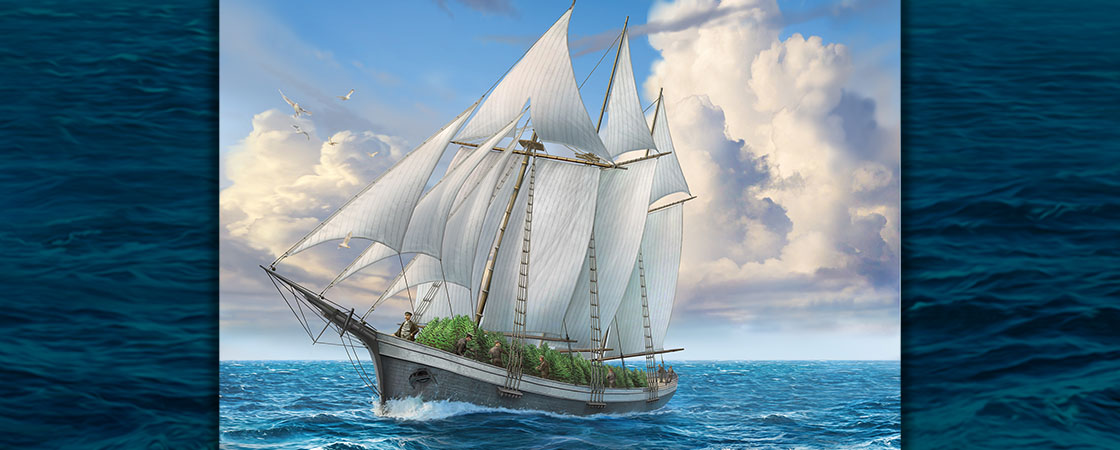DN-0006926, Chicago Daily News collection, Chicago History Museum (Captain Schuenemann)
Captain Schuenemann and his crew
It was November 22, 1912. A boat captain named Herman Schuenemann
[SHOO-nuh-min] prepared to sail from Thompson, Michigan. The air was as cold as ice. Strong winds whipped across the ship. Wild waves pounded against the shore like giant hammers.
But the captain wasn’t too worried. He had sailed across Lake Michigan hundreds of times. For him, it was as normal as tying his shoes.
His ship, the Rouse Simmons, was heading to Chicago, Illinois. There were almost 5,000 Christmas trees on board! People said the ship looked like a forest floating on the water. Schuenemann could picture the homes where the trees would soon stand, bright and decorated.
But hours into the journey, a winter storm hit the area. Snow and ice formed a blanket of danger on the water. A week passed, and the ship still hadn’t arrived in Chicago. The Rouse Simmons had disappeared. Would anyone discover what happened?
It was November 22, 1912. There was a boat captain. His name was Herman Schuenemann [SHOO-nuh-min]. He was getting ready to sail from Thompson, Michigan. The air was as cold as ice. Strong winds blew across the ship. Huge waves hit the shore like giant hammers.
But the captain wasn’t too worried. He had sailed across Lake Michigan hundreds of times. It was as normal as tying his shoes.
His ship was called the Rouse Simmons. It was heading to Chicago, Illinois. There were almost 5,000 Christmas trees on board! People said the ship looked like a forest floating on the water. Schuenemann could picture the bright and decorated trees inside people’s homes.
But hours into the journey, a winter storm hit the area. A blanket of snow and ice formed on the water. A week passed, and the ship still hadn’t arrived in Chicago. The Rouse Simmons had disappeared. Would anyone discover why?


